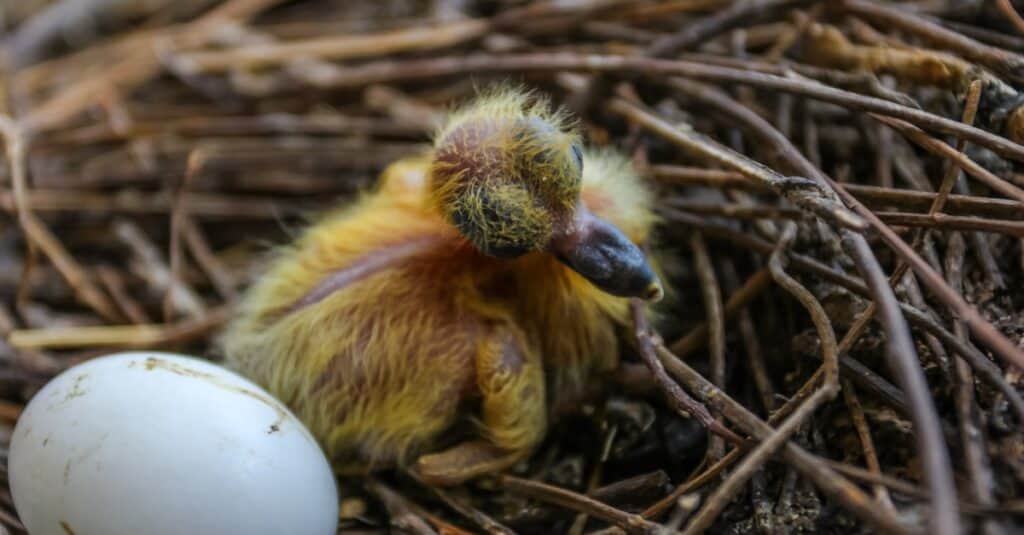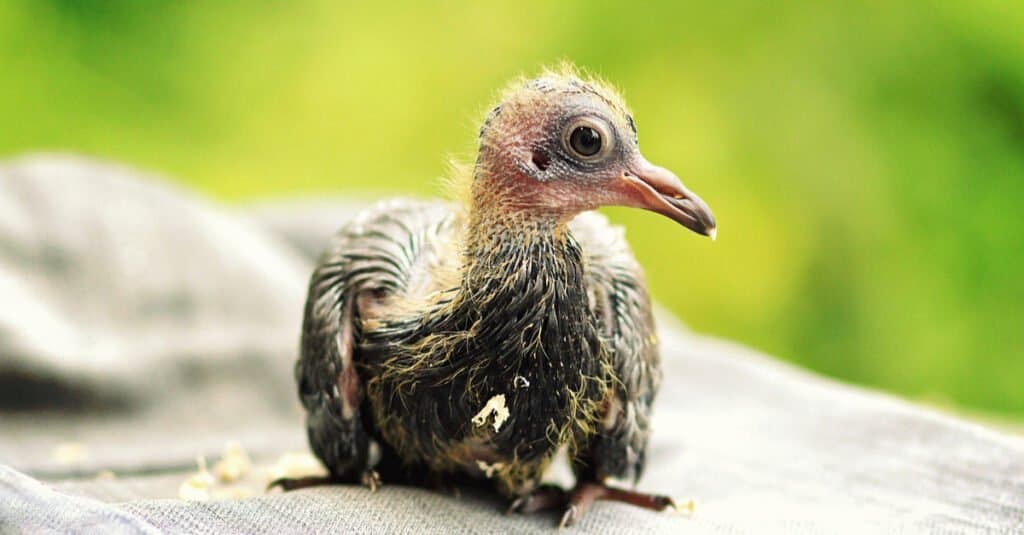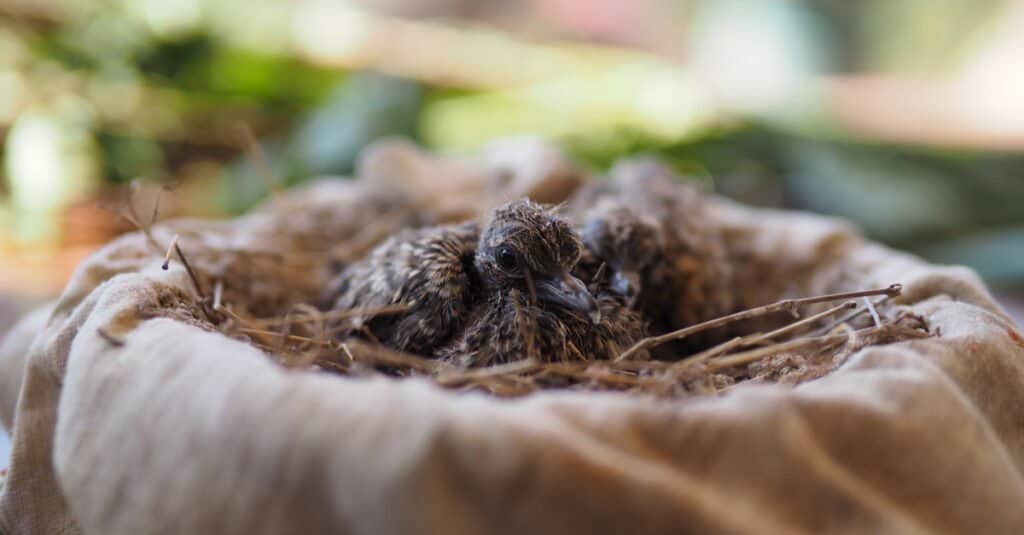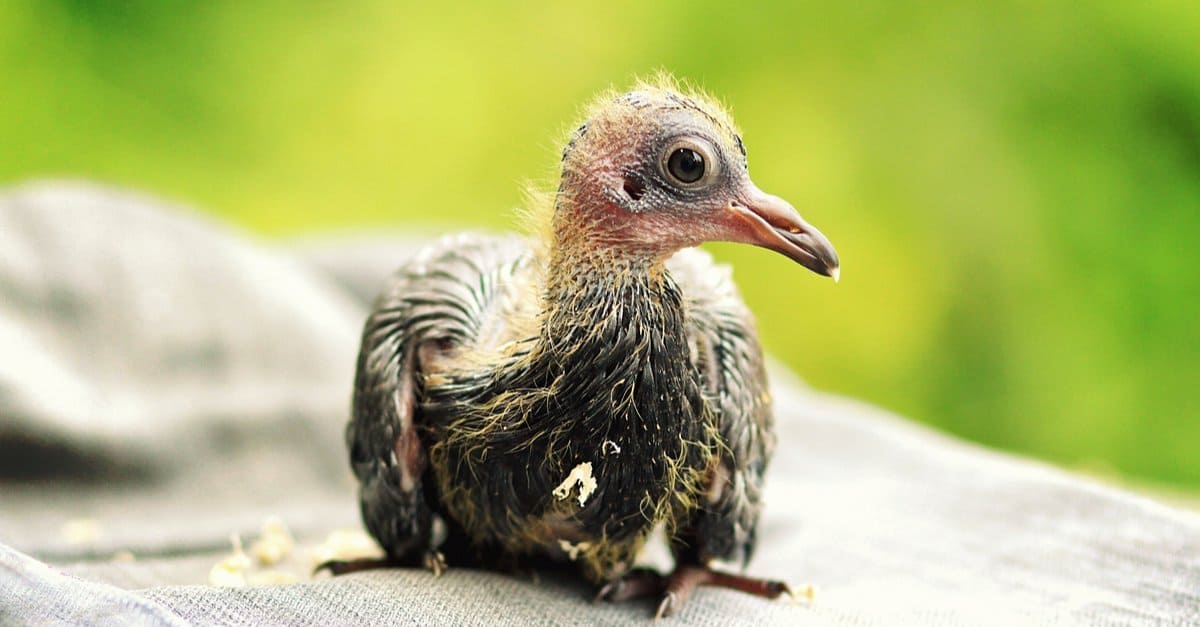Baby pigeons may be tiny, but they sure do grow up fast. There are many things to learn about these super-intelligent squabs, so let’s get started! Here are five baby pigeons pictures and facts:
#1: Baby Pigeons Have Involved Parents

Pigeon
babies have dedicated parents.
©iStock.com/icestylecg
Many animals in the animal kingdom are raised only by their mothers, but this cannot be said about the baby pigeon. Unlike many other animals, both male and female pigeons will take turns incubating their babies while they’re waiting to hatch.
Interestingly, both male and female pigeons also produce “crop milk,” a special secretion high in nutrients for their babies. All in all, both male and female pigeons raise their young, which is one thing that sets them apart from other birds on the planet.
Raising their young isn’t the only thing that a pair of pigeons commit to. When the two adult pigeons mate, they do so for life. During their lives together, the pigeons work together to protect their babies from predators by emitting soft coo’s when danger is near. If a threat is near, the parents will also distract the predator from their babies.
#2: Squabs are a Rare Sight in the Wild

Squabs won’t leave their nests for up to 45 days after birth.
©iStock.com/AGEphotography
Some people might speculate that squabs aren’t real since they’re rarely seen in the wild. Believe it or not, there’s a logical explanation for why this rumor is passed on so frequently.
Baby pigeons spend all of their time as babies in the nest with their parents because they cannot fly. Some pigeons will make it to the ground but cannot journey back to their nest in the trees. When this happens, the young birds will beg family and other adult pigeons for food and resources until they’re able to return to their cozy homes.
#4: Pigeon Babies Are Incredibly Intelligent

Squeakers are one of only nine animals that recognize their own reflection.
©Galina Sharapova/Shutterstock.com
Many things prove how clever the baby pigeon is. One of the most significant of these is that they can pass the “mirror test.” The mirror test is a test of self-awareness, which is tested by placing the animal in question in front of a mirror.
If the animal is aware the image in front of them is their reflection, they pass the test. On the other hand, animals that assume they’re seeing another animal fail the test. Pigeon babies are one of only nine animals that pass this test. Pigeons first proved that they could pass this test in 1979.
#4: Baby Pigeons Are Born With A Built GPS

Squabs are born with the extraordinary ability to find their homes from miles away.
©ARTFULLY PHOTOGRAPHER/Shutterstock.com
There was a time in the United States that about one-fourth of all the birds in the country were carrier pigeons. Carrier pigeons are pigeons that carry messages from one person to another.
These pigeons were chosen based on the fact that they can find their homes from miles away. This means that these tiny pigeons are born with their own special GPS! The use of carrier pigeons for transit became obsolete with the rise of telephones and the internet, but their impact on communication made a massive impact on the world as we know it today.
#5: Squeakers Have Extraordinary Hearing And Sight

Pigeon babies can see objects up to 25 miles away from them!
©Tota shutter/Shutterstock.com
When squeakers are born, their eyes are shut. However, only a few short weeks after hatching, these baby pigeons can see over 25 miles away. Baby pigeons are also highly unique in that they can detect volcanic activity and storms that are brewing. Scientists believe that they can detect infrasound that storms, volcanoes, and tornadoes make. Humans can’t hear these sounds because their frequency is too low for our ears to pick up.
Thank you for reading! Have some feedback for us? Contact the AZ Animals editorial team.








